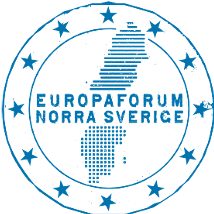Introduction
Cohesion policy is the EU’s main investment tool for stimulating economic growth and jobs at local and
regional level. The policy aims to strengthen economic, social and territorial cohesion within the Union
and to promote balanced development. The policy is mainly implemented through development
projects financed by funds and programmes tailored to the unique needs and conditions of the regions.
Since Sweden’s accession to the EU in 1995, cohesion policy has played a crucial role in the
development of the regions in northern Sweden. The regions are part of the European Arctic, an area
with extensive natural resources, great potential for the green transition and an increased strategic
importance due to climate change and a deteriorating security situation. The regions also face
specific challenges that make them vulnerable, such as large geographical distances, sparsely
populated areas, limited economic resources and an economy that is sensitive to market fluctuations
and dependent on natural resources. To address these challenges while at the same time exploiting
the opportunities available, cohesion policy has been a key driver of the development in northern
Sweden.
Through EU support, actors in northern Sweden have been able to co-finance strategic projects and
test innovative ideas, which have then been scaled up and integrated into regular activities. Longterm
investments have been made possible at local and regional level, where strong local and
regional influence has created commitment and ownership. This has been important to ensure that
interventions respond to actual needs and to create an interplay between different interests. In this
way, cohesion policy contributes to unlocking the potential for development and creating more
competitive business, smarter communities and vibrant regions.
In the upcoming negotiations on the EU’s next long-term budget, the Union will be faced with
important decisions on which policy areas and investment tools should be priorities and how they
should be designed. Ahead of the negotiations, Europaforum Northern Sweden therefore wants to
highlight examples of concrete efforts, and the added value created by the EU’s cohesion policy in
northern Sweden. Other reports, such as the European Commission’s Ninth Cohesion Report, show
that cohesion policy has played a central role in promoting economic integration and prosperity
within the Union. For a country like Sweden, where 70 per cent of exports go to the EU’s single
market, this creates increased trade opportunities and stronger economic links with other Members
States. This report can be seen as a further contribution to the knowledge and understanding of
cohesion policy presented from a regional perspective.
With these introductory words, Europaforum Norra Sverige hopes that this report will provide a
deeper understanding of cohesion policy and its importance for the development of northern
Sweden.
Europaforum Norra Sverige, March 2025

